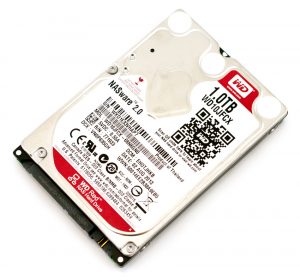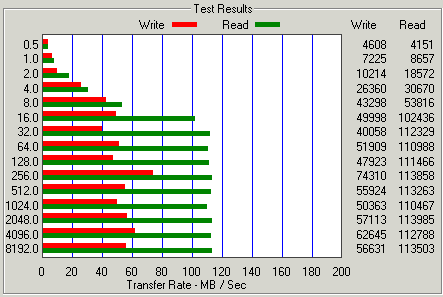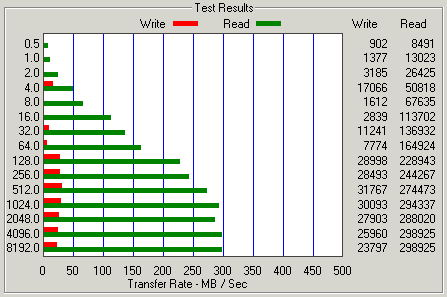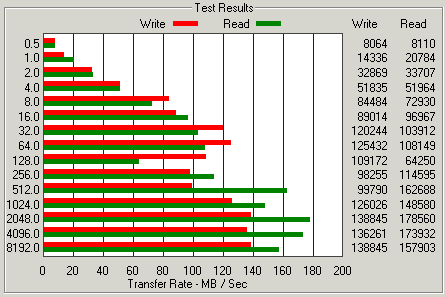 I am setting up a new server, with four 2.5 inch hot swap 1tb WD Red disks – model WD10JFCX. Write performance is key in this setup as 90% of the workload is putting data to disk.
I am setting up a new server, with four 2.5 inch hot swap 1tb WD Red disks – model WD10JFCX. Write performance is key in this setup as 90% of the workload is putting data to disk.
SSD drives would be nice, but not cost effective to get the space needed. I suspect the best option is going to be RAID 10, but lets run a few tests first.
No RAID
Testing with a single drive gives us a max. write speed of 74 MB/Sec and maximum read speed of 113 MB/Sec which is not very impressive.
RAID 5
Next up, a four disk RAID 5 setup – the performance is BAD! You do gain quite a bit of read performance maxing out at just under 300 MB/Sec but the write performance has taken a major hit vs. a single drive coming in at only 31 MB/Sec.
RAID 10
Now lets check out RAID 10, which should be the fastest configuration out of the bunch. The downside is you need at least four hard drives and you loose 50% of your capacity to redundancy.
As expected the performance is about double what we get from a single drive. Maximum write comes in at 138 MB/sec and maximum read is 178 MB/sec. The read did not increase by double, but the performance did improve for sure over a single drive.
If your workflow is mostly read the RAID 5 configuration actually performs better. I suspect the more drives you have in your RAID 5 configuration the faster it would probably get since you have more spinning heads.
For our write intensive workload we will be going with the RAID 10, which is very slow vs. SSD but the cost of SSD would be over $1,000 for the same space. These 1tb WD Red drives we are using currently cost about $75 each. By using RAID 10 we get the fastest write performance and quite a bit of redundancy.




Hey! Thanks for sharing these results! I’m building myself a new system and was thinking if using WD reds as my main desktop drives (not in an NAS enclosure).
Considering I would configure them in RAID10 to increase performance and security, how would they perform as opposed to single drives that spins at 7,200 rpm? Have you done these kind of tests?
The WD red drives I used were the 2.5 inch version, since that is what the servers hold. They are not the best for performance, if you have the ability to use 3.5 inch disks they are faster.
If you are using Raid 10, or Raid 0 you are going to approx. double the disk performance.
I did test 7200 RPM server disks as well (single drive) in this thread. That drive performs about the same as the WD red drives in Raid 10, but it is a 3.5 inch drive that spins at 7200 RPM – and is not so expensive (about $60 right now).
If you can run two of those in Raid 10 or Raid 0 you will double the performance of the WD Red 2.5 inch.
Pingback: MySQL replication woes – error 1236 | wagamama.ca
Be mindful of hard errors which are the reason that RAID no longer lives up to its original promise.
If one of the drives fails, then during the rebuild if you get an error – the entire array will die.
http://www.zdnet.com/article/why-raid-5-stops-working-in-2009/
SATA drives are commonly specified with an unrecoverable read error rate (URE) of 10^14. Which means that once every 12.5 terabytes, the disk will not be able to read a sector back to you.
Pingback: Old Technology – Will Caching Help? | wagamama.ca